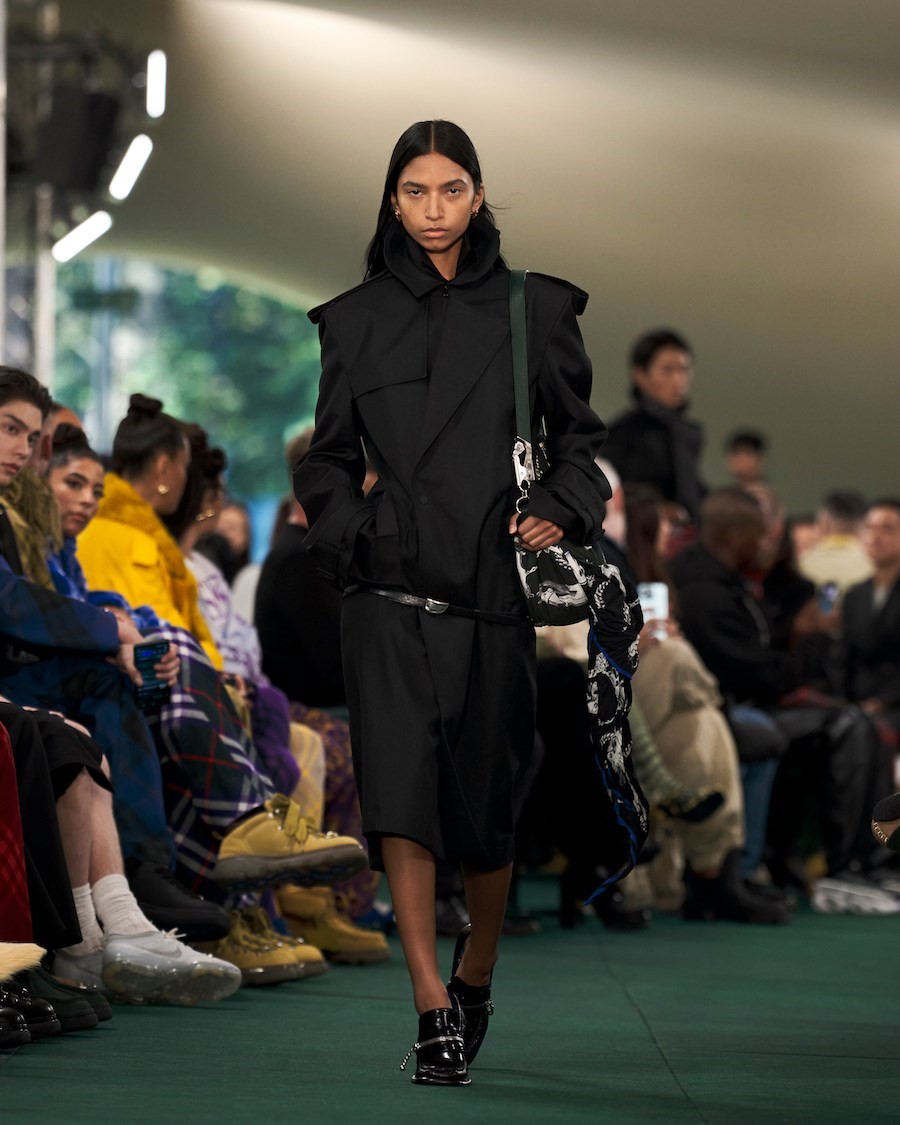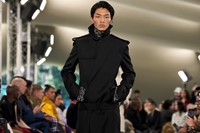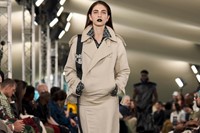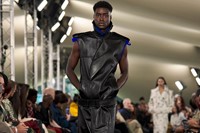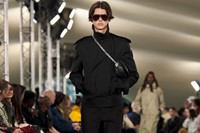For its Spring/Summer 2024 show, Burberry pitched its checkered tent literally in the middle of Highbury Fields, a leafy few hectares in north London – and, ideologically Daniel Lee pitched this Burberry collection as an encapsulation of the great outdoors. The sides of the tent were open, to let fresh air – and a few insects – circulate around the enclosure. The audience sat on park benches, and the floor underfoot was green, pleasant.
It’s all part of the adroit and savvy brand-building Lee has undertaken since he began at Burberry almost a year ago – linking Burberry with its storied history as outwear providers and weatherproofs, shooting its campaigns on wind and rain-ravaged tourist hotspots (or, rather, not-so-hot considering their in Britain), and rooting his reimagining in the house’s heritage. Because Burberry’s repute was made as a protective label, a label to be worn outdoors, whether that be on a city street or the Arctic Circle.
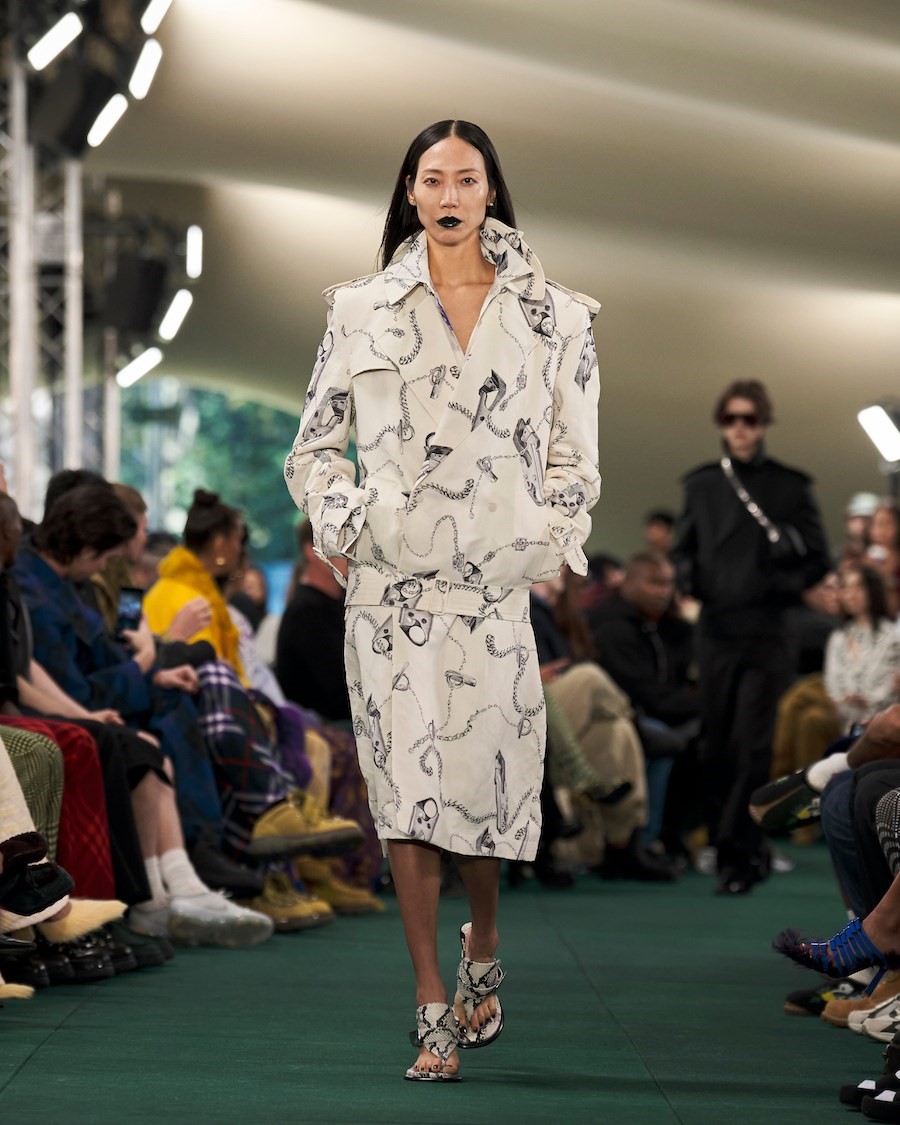
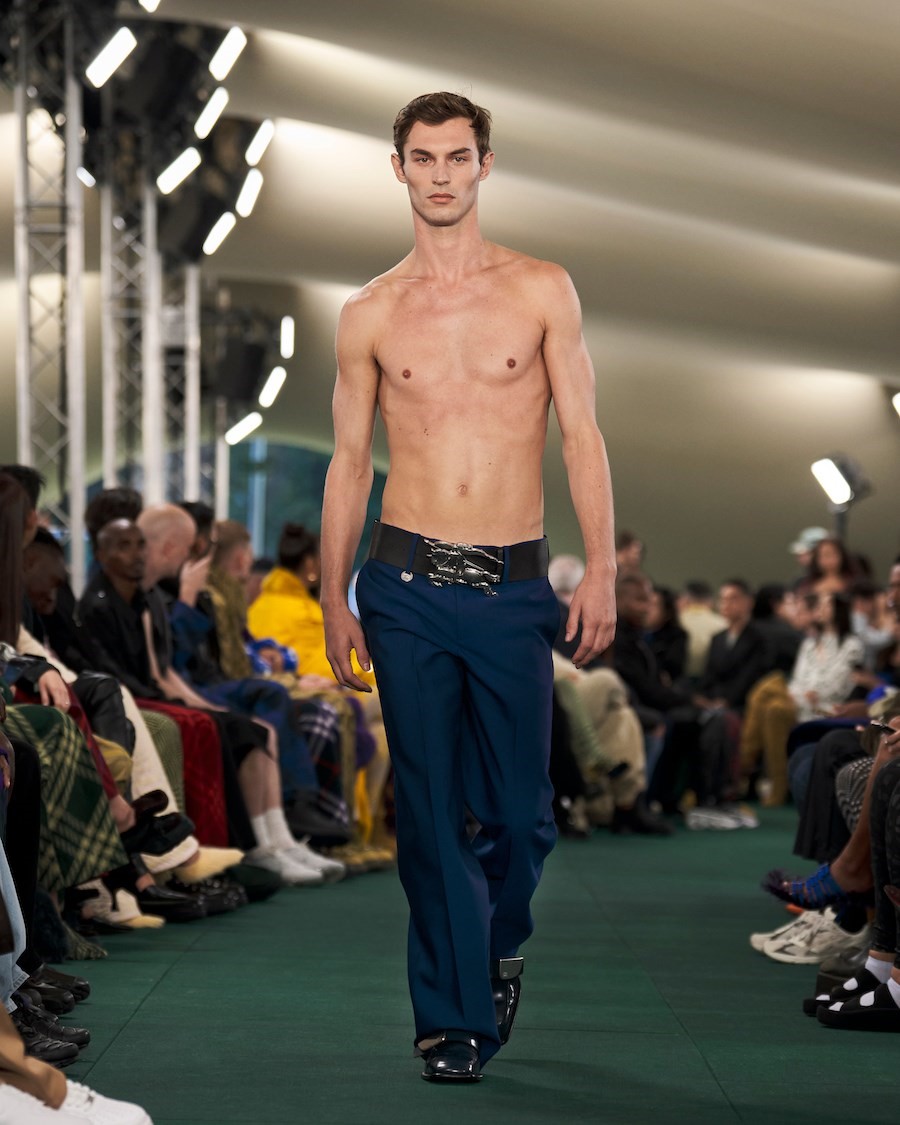
Of course, the ultimate expression of that idea was the trench coat – Burberry doesn’t take credit for inventing it, but it’s a garment the brand’s name has become synonymous with. Lee opened his show with five iterations – then, a jacket version, before showing another to round out a half-dozen. The silhouette was neat, softly squared at the shoulder, the waistline dropped, but all components in place – epaulettes, storm flaps, strapped cuffs and all. Using its coded signifiers, present and correct, allows you to tinker with the results, shifting proportion, endlessly reinventing – it’s a system.
Systems and rules are also inherently British – the trench was born out of a uniform itself, after all. There were direct nods elsewhere with frogging and ceremonial gold buttons, but also winks to the idea of everyday uniforms. The graphics of mid-century ladylike silk scarves, a uniform of British upper-class formality – most famously, the late Queen Elizabeth II tied a Burberry foulard over her hair when stalking deer at Balmoral – inspired prints that swirled across flowing blouses, dresses and (naturally) trench-coats. These immortalise the components of Burberry’s new accessories, carabiner clips and dangling chains arabesque-ing across surfaces. They resembled something found in the archive – which, in the future, they will be.
That hardware also spoke of the outdoors – rock climbing, extreme sports pursuits, the kind of stuff you may be doing after you clamber out of a tent (albeit a less grand one than Burberry’s show venue). Which is also why designs were strewn with garden flowers and summer fruits, redolent of garden parties and fetes, the other lighter-hearted reason you may be stumbling out of a tent bleary-eyed some morning.
The whole notion of Burberry – for Lee, and in wider culture – is to connect with ideas of Britishness and, to a degree, to export them around the world. Lee’s work both embraces and explodes clichés – the re-branding of Bond Street tube as ‘Burberry Street’ being a prime example of harnessing globally-recognised markers of the country, and allying them inextricably to Burberry. It’s actually something Thomas Burberry did himself, in the 19th century – banking on the buying ability of Britishness, the meaning of that label. Burberry today is doing the same – and, in so, has found a distinct USP.
